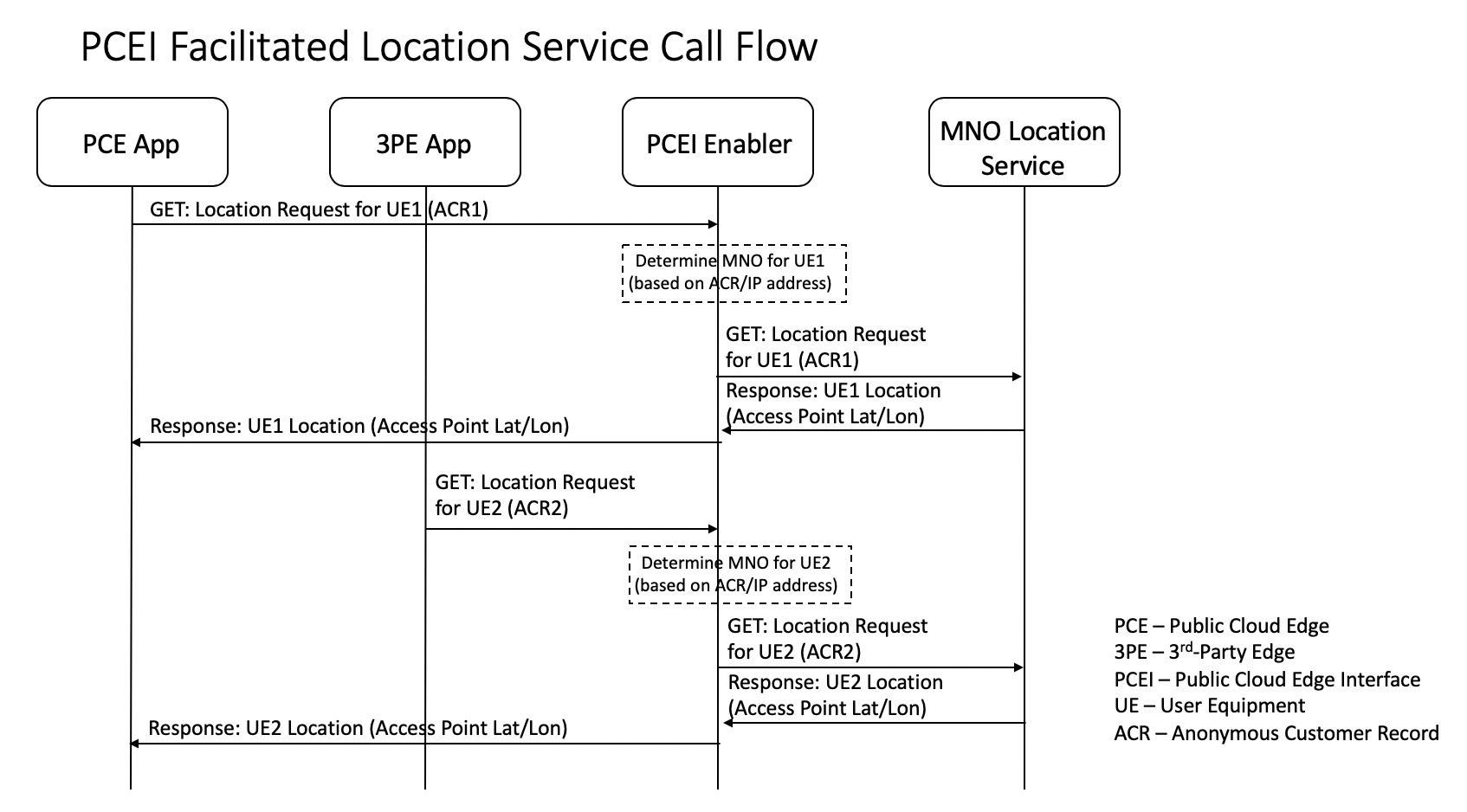Introduction
The PCEI API Document includes a list of APIs which are included in the PCEI Enabler interfaces with telco side and public cloud/third party cloud sides. As architecture page shown, all APIs from P1 to P8 interfaces will be eventually included. Currently in this release, we first focus on the P2' interfaces, the MNO core network function APIs. We transplant some of the ETSI MEC APIs and re-encupsulate thems. The following example is location service related API. It is RESTFUL and all interactions are fulfilled through HTTP/HTTPS request and reply.
In the future, we will add more MNO function APIs into it. Also for other interfaces from P1 to P8.
Location API
- UE Location Lookup
GET<>
(
Used to get a list of identifiers for zones authorized for use by the application.
...
This operation is used for cancelling a subscription and stopping corresponding notifications
)
Example Call Flow
PCEI Facilitated Location Service (using on OMA Zonal Presence API or ETSI MEC Location API)
Assumptions:
- MNO provides a Location Service (LS) compliant with OMA Zonal Presence API (OMA-TS-REST_NetAPI_ZonalPresence)
- A Public Cloud Edge (PCE) instance is associated with a Zone (collection of Access Points such as small cells) provided by an MNO
- A 3rd-Party Edge (3PE) instance is associated with a Zone (collection of Access Points such as small cells) provided by an MNO
- An application/workload in the PCE requires Location Information (e.g. coordinates of the Access Point) for the UE/subscriber
- An application/workload in the 3PE requires Location Information (e.g. coordinates of the Access Point) for the UE/subscriber
- PCEI Enabler facilitates Zonal Presence API Request/Response routing between PCE and the MNO LS and between the 3PE and the MNO LS
The example use case diagram is shown below:
The example call flow sequence is shown below:

